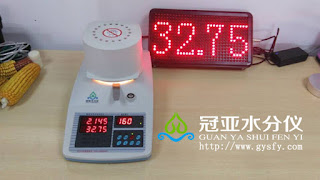According to an analysis by cofeed.com, tight supply conditions in the early months of China's 2016/17 corn marketing season have reversed. The peak season for corn sales has arrived, and weather and logistics factors that constrained corn marketing during October-November have now been alleviated. Cofeed says that farmers in northeast China have given up their reluctance to sell their corn after receiving their corn producer subsidies. They need to raise money to pay off loans and prepare for the Chinese new year holiday.
Demand for corn in China, meanwhile, is tepid. Hog farmers have stepped up their slaughter as the peak consumption season approaches, and there is little impetus to expand among either hog or poultry producers. Purchases by industrial processors motivated by subsidies of 100-200 yuan per metric ton in northeastern provinces have tailed off as commercial inventories piled up. A number of starch manufacturers in north China have shut down or cut back on production due to environmental regulations aimed at clearing up what may be the worst-ever air pollution in the region.
Futures Daily also reported that corn traders have seen a much larger volume of corn entering the market recently, and processors have received more deliveries than they can use. The spot price at ports in Liaoning Province has fallen to 1500 yuan per metric ton and the futures price for May 2017 delivery has fallen to the same level.
According to prices posted on the Ministry of Agriculture web site, cash prices at Dalian ports fell about 15 percent from November 24 to December 29.
| Corn prices at ports in Dalian, China during 2016 | |
| Month | Yuan/mt |
| 24-Nov | 1750-1780 |
| 30-Nov | 1720-1740 |
| 7-Dec | 1660-1680 |
| 14-Dec | 1580-1600 |
| 21-Dec | 1490-1510 |
| 29-Dec | 1490-1510 |
Cofeed.com reports that the price for domestic corn arriving from the northeast in Guangdong province reached 1600 yuan per metric ton on December 26, down 310-340 yuan from late November. The estimated C&F price of U.S. corn arriving in Guangdong is estimated at 1570 yuan. Cofeed pronounces that imported corn has lost its price advantage. They forecast that China's corn imports will be about 2 mmt during calendar year 2017, down from an estimated 3.1 mmt in 2016.
There are also rumors that China plans to export corn. Cofeed reports that the Chinese government has issued export licenses to a number of large trading companies, and surmises that there is a strong likelihood that China will export corn in 2017.
Another online outlet reported that COFCO and at least one other state-owned company received corn export licenses in September, and linked China's corn export plan to the need to dispose of corn inventories. This report mentioned an initial estimate of 2 million metric tons for the export campaign, a volume that would put further downward pressure on international prices.
An article by COFCO's futures research institute anticipates that China could export large amounts of corn from the 2016/17 crop while channeling corn from massive reserves into the domestic market.
This month's corn prices at Dalian (the likely point of departure for any exports) translate to US$215-217 per metric ton, which does not appear to be competitive in nearby export markets. The average value of November corn imports by Japan ($188) and South Korea ($208) reported by customs statistics were lower than Chinese prices. Taiwan imported corn at $181 in October. There is speculation about whether Chinese officials will subsidize exports--that would be a violation of China's WTO accession commitment not to use export subsidies for agricultural commodities.
Despite their ambitions to export, Chinese authorities are taking action to prevent domestic corn prices from falling enough to be internationally competitive. At the beginning of the marketing season officials adopted an informal price floor of 1400 yuan per metric ton in northeastern provinces which they calculated to be the breakeven price that covers farmers' production costs (not including land rent). With renewed downward pressure on prices, Sinograin--the government's grain reserve corporation--is rumored to be preparing purchases of corn to hold the 1400-yuan "line of defense." Instead of the massive purchases used to support prices in the last 10 years, this year Sinograin is making small intermittent purchases and making announcements about their 1400-yuan price to put an informal floor under prices.
To put this informal price floor in perspective, the 1400-yuan "line of defense" is 30 percent less than last year's "temporary reserve" support price of 2000 yuan. The end of the temporary reserve program left a big hole in the northeastern corn market. Grain Bureau statistics show that only 36 mmt of the 2016 corn harvest had been purchased in major producing provinces as of December 25. That was 25.9 mmt behind last year's pace. The December 25 purchase volume also represents only 16 percent of the harvest reported by the National Bureau of Statistics.
China is moving at a snail's pace toward equilibrium in its corn market. Despite already-massive excess supply and huge reserves, the National Bureau of Statistics reported that 2016 corn production declined only 0.3 percent from the previous year. Cofeed estimates that corn consumption will be 190 mmt in 2016/17, which falls far short of the estimated production of 219.6 mmt. Chinese officials are targeting a decline in corn planting of only 10 million mu (670,000 ha). The COFCO futures analysis sees a possibility of a La Nina causing a surge in prices that would allow China to offload its reserves. Absent a catastrophic event or other market turmoil, it looks like China will have excess corn supplies for years to come.


















